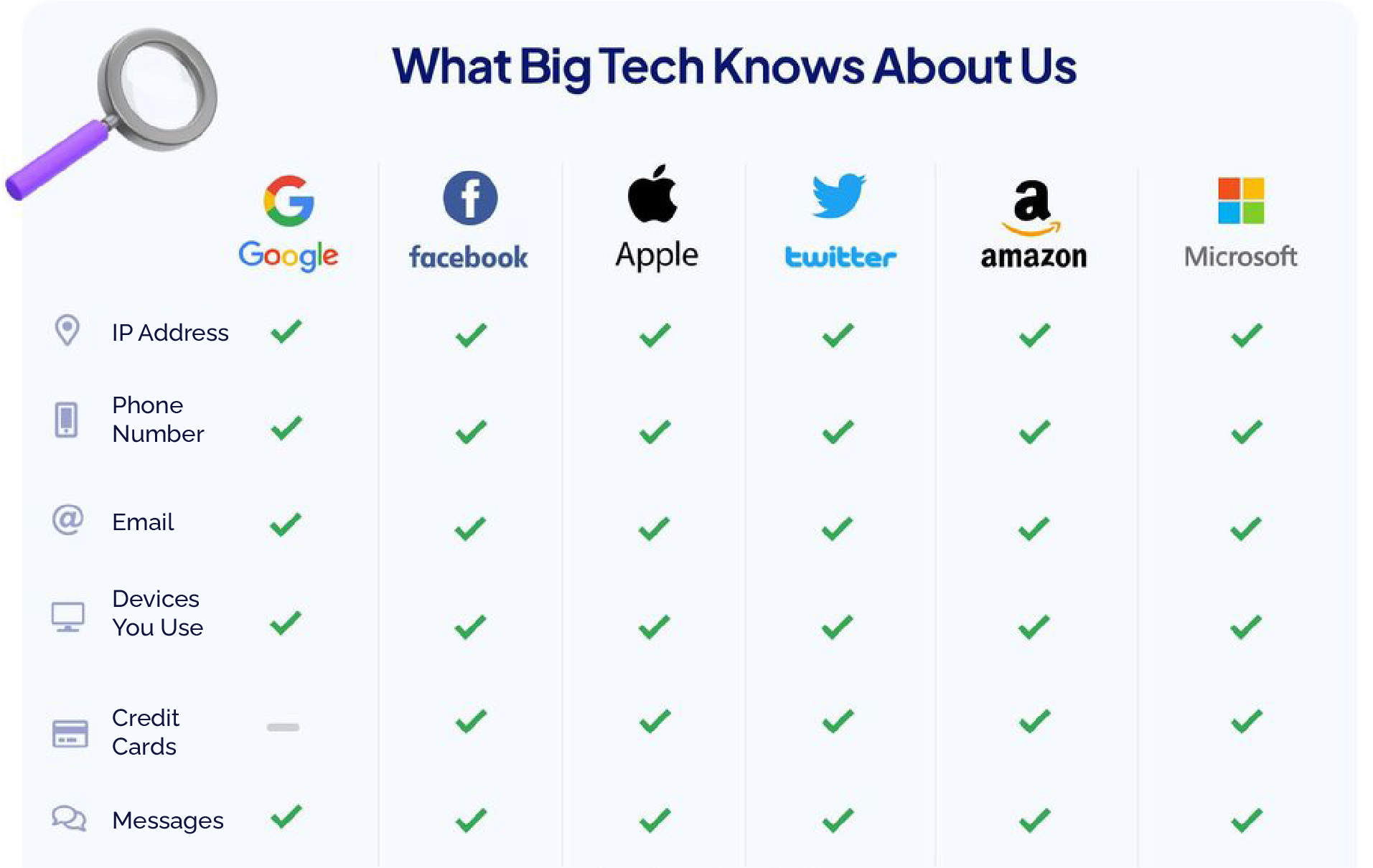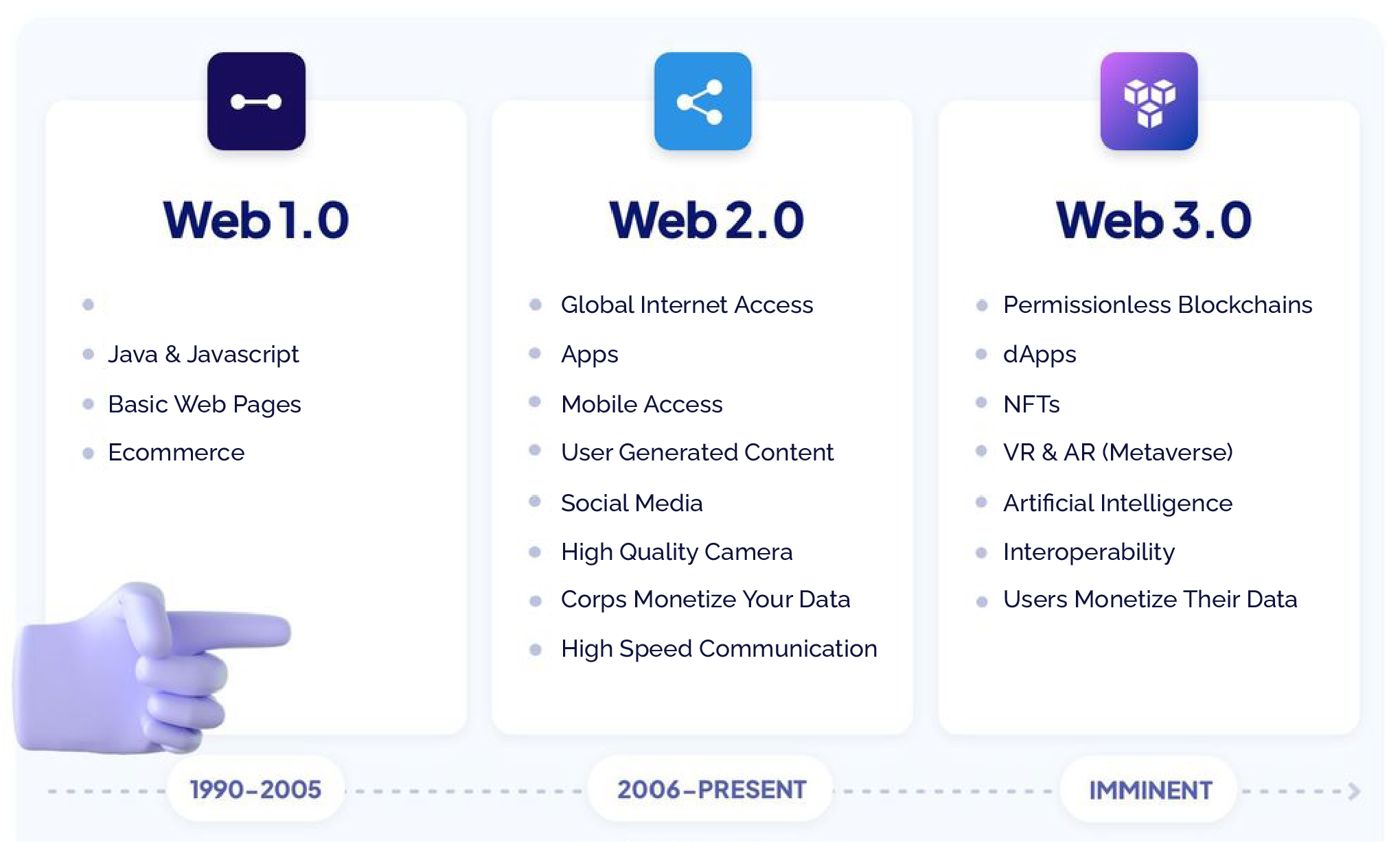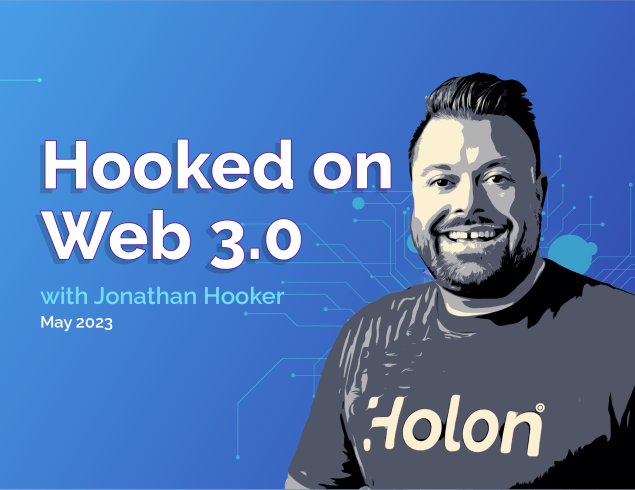“How did we get here?” The shift from Web 2.0 to Web 3.0 is happening, now
Get busy or distracted, and so much can happen. That child is suddenly starting university, or that tree you planted is now giving shade. Technology is no different, and when business cases get behind the investment and development, it can make a robot’s head spin. The internet, the most amazing invention of our lifetimes, has changed, and it is about to change again.
The World Wide Web has come a long way since its inception in 1989. From the static HTML pages of the early days, we have seen the rise of Web 2.0, a term coined in 2004 to describe the shift towards dynamic, user-generated content and social networking. Now, we are on the cusp of another transformation with the advent of Web 3.0, a vision for a decentralized, trustless internet powered by blockchain technology.
Web 2.0 brought about a new era of interactivity and collaboration on the web. Sites like Wikipedia, YouTube, and Facebook enabled users to create and share content on a massive scale, while platforms like Amazon and Airbnb disrupted traditional business models with peer-to-peer marketplaces. These innovations were made possible by advances in web development frameworks, cloud computing, and mobile devices.
However, as the internet became increasingly centralized, concerns about data privacy, security, and censorship grew. The business models of Web 2.0 companies also came under scrutiny, with many relying on ad-based revenue models that prioritize engagement over user well-being, and so many of us feeling the unease of being watched (Figure 1).
Figure 1: Web 2.0 compromises

Source: creative-tim.com
Enter Web 3.0, the next evolution of the internet. At its core, Web 3.0 aims to address many of the issues of the current internet by leveraging blockchain technology to create a decentralized, trustless network. In a Web 3.0 world, users would have greater control over their data and digital identity, and would be able to participate in new forms of peer-to-peer collaboration and value exchange.
One of the key features of Web 3.0 is the use of decentralized applications (dApps), which run on top of blockchain networks like Ethereum or Polkadot. These dApps are built using smart contracts, which are self-executing agreements between parties that are enforced by code. This enables a wide range of new use cases, from decentralized finance (DeFi) to non-fungible tokens (NFTs) and digital art.
Another important aspect of Web 3.0 is the concept of Web3 browsers, which allow users to interact with blockchain-based dApps and websites using their existing browser. These browsers, such as Metamask and Brave, provide a seamless on-ramp to the decentralized web and enable users to manage their crypto assets and interact with dApps directly from their browser.
The decentralized nature of Web 3.0 also means revolutionary benefits for data storage, with Filecoin already taking the lead and challenging the Big Three (Google, AWS & Microsoft) cloud firms with decentralised, secure, affordable – and 100% green options. As we say at Holon: after all, it’s your data.
However, the road to Web 3.0 is not without its challenges. One of the main obstacles is the scalability of blockchain networks, which currently struggle to support the level of traffic and transactions required for mainstream use. Another challenge is the need for widespread adoption and education, as many users are still unfamiliar with blockchain technology and the decentralized web.
Adoption of Web 3.0 also requires overcoming the kinds of misinformation and fear that typically accompany societal-scale technological innovation. Blockchain for example is a target for media panics that highlight harmful actors that make up a small percentage of all use (such as scams and financial transactions that support crime). It is a natural competitive response when current systems and platforms are being disrupted to use these arguments to delegitimise any technology in the eyes of the public and pressuring regulators to enact policies to favour centralised, Web 2.0 services. With so much momentum over the last decade and growing awareness of the value Web 3.0 contributes, it’s not a question any more of if, but rather when adoption will scale.
“Adoption of Web 3.0 also requires overcoming the kinds of misinformation and fear that typically accompany societal-scale technological innovation.”
Despite these challenges, the potential of Web 3.0 is enormous. By creating a more open, transparent, and decentralized internet, we have the opportunity to build a more equitable and sustainable digital future. From decentralized finance and social networks to digital art and gaming, the possibilities of Web 3.0 are limited only by our imagination.
Figure 2: Web 1.0 & Web 2.0 vs Web 3.0
 Source: creative-tim.com
Source: creative-tim.com
The journey from Web 2.0 to Web 3.0 (Figure 2) represents a fundamental shift in the way we think about and interact with the internet. While Web 2.0 brought about many positive changes, it also highlighted the limitations of a centralized, profit-driven internet. Web 3.0 offers a vision for a more open, equitable, and decentralized web, powered by blockchain technology and smart contracts, with entities and individuals cooperating by reducing the cost of trust and the creation of applications that can work together without compromising human rights such as privacy and security.
In other words, progress.
Disclaimer: This Publication has been prepared by Holon Global Investments Limited ABN 60 129 237 592. Holon Global Innovations Pty Ltd (“HGI”) is a wholly owned subsidiary of Holon Global Investments Limited (together “Holon”). HGI is a Filecoin (FIL) Storage Provider and is positioned as a major player in the FIL decentralised data storage arena for Asia Pacific. FIL Storage Providers are rewarded in FIL for the provision of data storage capacity. Holon, its officers, employees and agents believe that the information in this material and the sources on which the information is based (which may be sourced from third parties) are correct as at the date of publication. While every care has been taken in the preparation of this material, no warranty of accuracy or reliability is given and no responsibility for this information is accepted by Holon, its officers, employees or agents. Except where contrary to law, Holon excludes all liability for this information.





